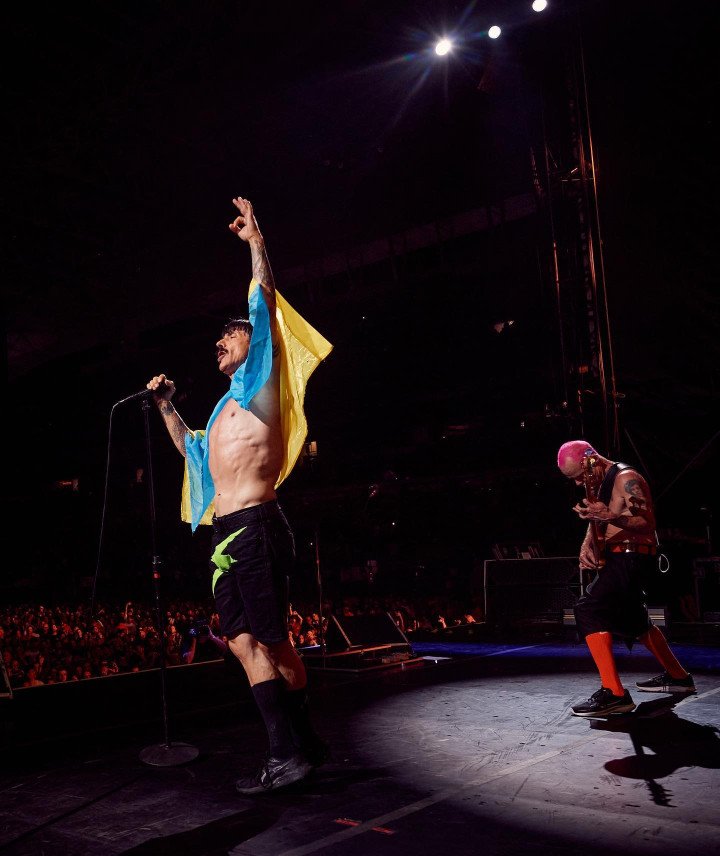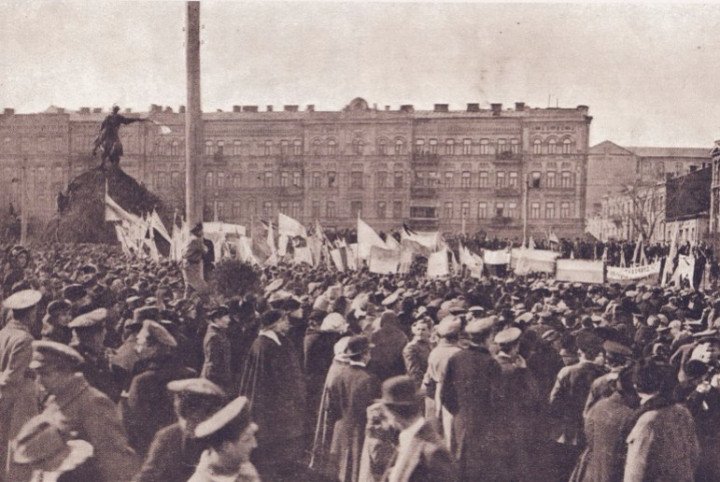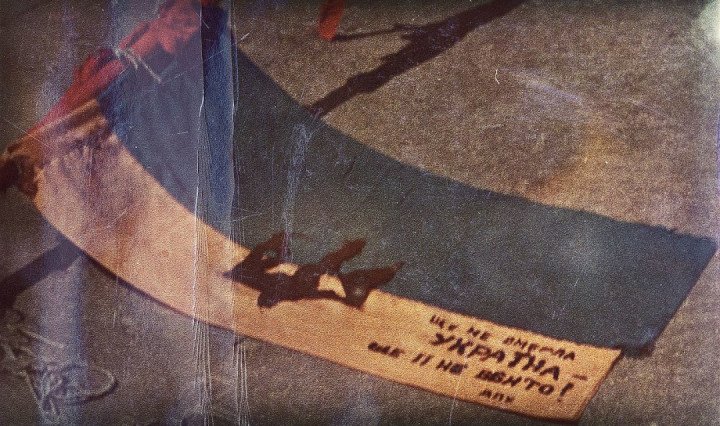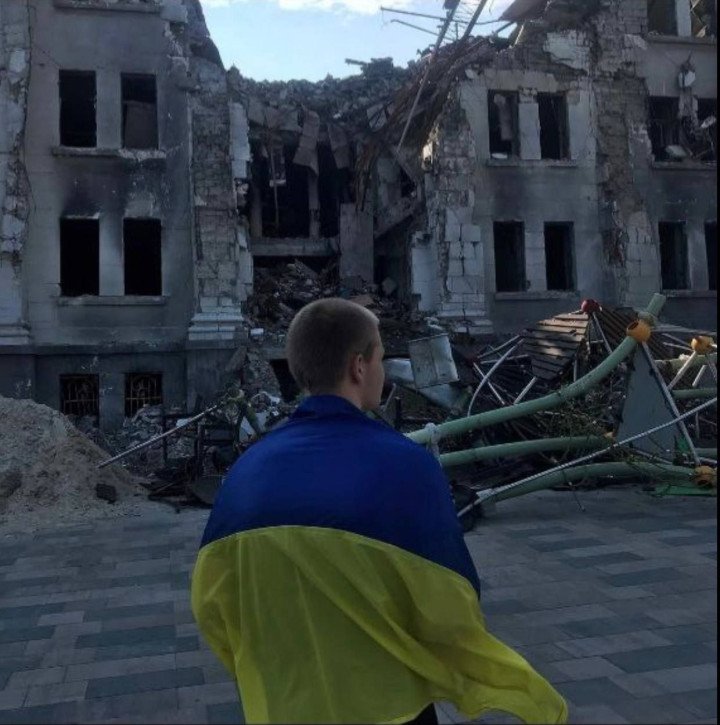From the shoulders of a defiant teenager in occupied Mariupol to the stage of a Harry Styles concert—the Ukrainian flag has become a symbol of resistance and solidarity worldwide. This is the story behind Ukraine’s blue and yellow emblem of hope.
When in the summer of 2023, British pop star Harry Styles took the blue and yellow flag of Ukraine out of the hands of a wide-eyed fan right from the stage of his Warsaw concert and lifted it to the skies during one of his songs, he momentarily won the hearts of millions of Ukrainians across the world.
At a time of darkness and pain, the British musician chose to show support to the people of a country living through Russia’s brutal full-scale invasion. As videos of him wearing blue and yellow from head to toe with the flag of Ukraine in hand reached the internet—they quickly went viral, sparking a new wave of admiration both for the pop star and for Ukraine.
@yananassik Harry Styles with Ukrainian flag in Warsaw💙💛 #harrystyles #ukraine #hslot
♬ оригинальный звук - ʏᴀɴᴀ 🦋
But this was not an unprecedented gesture of solidarity with the people of Ukraine that involved the vibrant blue and yellow flag—not even for Harry Styles himself. Earlier that year, he waved the flag of Ukraine during his concert in the US—sending Ukrainian fans into a frenzy.
There was also Anthony Kiedis, the legendary frontman of the US band Red Hot Chilli Peppers. In September of 2022—just 6 months after Russia’s full-scale invasion began—he unfurled the flag of Ukraine at his concert in the US and posted a photo with the caption “Love Ukraine.” Over the last two years, the flag was also seen at concerts of Ed Sheeran, Mick Jagger, Paul McCartney, Imagine Dragons, Florence and the Machine, Billie Eilish, and many other world-famous musicians and bands.

The blue and yellow flag of Ukraine took on a new meaning, one of global solidarity and support, in times when Ukraine needed it most. But what did the flag actually mean? What do its blue and yellow colors represent? And why did so many Ukrainians risk their lives to proudly display it over the years?
The sky, the fields, the freedom
Ukrainians have always had a strong connection with their land and their nature—the land they’re fighting to protect today. This bond has been represented throughout Ukrainian folk songs, literature, and cinema. That is why it’s no surprise that the flag of Ukraine is commonly believed to be a representation of that connection, too.
The blue band on the flag is said to represent the bright skies and the yellow — the golden fields of wheat that Ukraine is known for. It’s as if you’re looking out of a window onto serene Ukrainian landscapes that are so common across the country.
This bond with the land and nature symbolized by the flag of Ukraine is also closely tied to the country’s fight for freedom. Today, it reminds Ukrainians that we are fighting for every kilometer of our country, for our land, and our nation. It gives Ukrainians hope for a better future—one with clear blue skies above our heads—and translates that hope to the entire world.
The origin story
The flag of Ukraine started carrying the spirit of freedom earlier than 1992, the year Ukraine regained its independence from the Soviet Union. It has served as a symbol of hope and national liberation for Ukraine for centuries—and was therefore feared by those who tried to oppress and dominate the nation. It represented the nation’s revolutionary spirit as it developed new layers of meaning over the years.
Its first official use dates back to 1848 when Ukrainian revolutionaries, seeking freedom from Austro-Hungarian rule, adopted it as the first national flag. Its colors were based on Lviv’s coat of arms dating back to the 13th century and consisted of two equal horizontal stripes—the stripes we see on the flag of Ukraine today. It was then used by Ukrainian warriors—Cossacks—and seen in many depictions of life at that time.
Then came 1917—the time of Ukrainian national revival that cautiously inspires many Ukrainians fighting for freedom today. In the wake of the Russian Revolution of 1917 and the collapse of the Russian Empire, a group of Ukrainian cultural leaders, academics, activists, and intellectuals set up an independent Ukrainian state called the Ukrainian People’s Republic (UPR.) Full of hope for a free Ukrainian future, they adopted that same blue and yellow flag to represent their state.

Not surprisingly, the Bolsheviks couldn’t handle a free Ukraine and therefore decided to invade and destroy it. The invasion of the UPR by Bolshevik forces, who were seeking to establish control over the entirety of the former Russian Empire, involved a combination of military offensives and political manipulation—leading to intense fighting and guerrilla warfare in Kyiv and other cities. Eventually, the free Ukrainian state was destroyed and absorbed into the Ukrainian Soviet Socialist Republic—evidently marking the victory of Russian imperialism once again.
During the times of the Soviet Union, the blue and yellow flag was banned and forbidden by the state—which makes one question the claim that all nations were allegedly equal in the USSR. Using or possessing the flag was a punishable offense. However the strict ban did not stop those who were dedicated to preserving Ukrainian national identity and fighting the oppressive system.
One case: An act of defiant resistance
In 1966, two young activists installed a self-made blue and yellow flag on the roof of the Kyiv Institute of National Economy. This daring act involved removing the Soviet flag and replacing it with a Ukrainian one—a plan carefully prepared by Heorhiy Moskalenko and Viktor Kuksa.
At first, they had issues with finding the right color of fabric in order to stitch the flag together because you couldn’t simply buy a ready-made Ukrainian flag in the shops. Once they found what they needed—to further underscore their message—they inscribed “Ukraine has not yet died — it has not been killed yet” on the two stitched pieces of cloth. They then carefully chose the location to ensure that as many people as possible would see their act of protest, and in an undercover operation raised the flag above the massive university building overnight. Sadly it was spotted by a university worker and taken down by the police—triggering the chase to find the perpetrators.

Heorhiy Moskalenko, one of the activists, later explained that his inspiration for this act of defiance stemmed from the global wave of anti-colonial movements occurring at the time:
“The sixties were a period when different nations were establishing their own states: Malaysia, Laos, Cambodia, Panama, Uruguay, Paraguay. People protested, took to the streets in demonstrations, they were shot at, dispersed with water, and yet they loudly demanded independence and liberation from colonial oppression.”
Six months later, the two young men were arrested. They were found guilty of “anti-Soviet propaganda” and imprisoned, only to be released years later. And even then, according to interviews they gave later, they were always watched by the KGB. Many others like them bravely raised the blue and yellow flag in defiance, even though it could have landed them in jail in a country that falsely claimed to cherish the 'friendship of peoples.’
Moments of hope
The flag always accompanied moments of hope for Ukraine—hope for a better future. Eventually, in 1991, the blue and yellow flag of Ukraine was carried into the Verkhovna Rada hall after the adoption of the Act of Declaration of Independence of Ukraine. Following the Revolution on Granite, this moment marked Ukraine’s renewed independence from Soviet control—with flag in hand. A year later it was officially approved as the state symbol of Ukraine and to this day symbolizes Ukraine’s long journey to freedom. From the crowds of the Orange Revolution to the Revolution of Dignity in 2014, the flag of Ukraine has accompanied brave Ukrainians in their acts of defiance.
With Russia’s full-scale invasion, Ukraine is once again fighting back against an invading force. That is why the history and meaning of Ukraine’s blue and yellow flag are now developing an even deeper meaning. From the shoulders of a teenager in occupied Mariupol to being hidden underground during Russia’s occupation of Kherson—the Ukrainian flag serves as a symbol of resilience and defiance.

As Russian forces advance, Ukrainians proudly raise their flag, rallying together in solidarity against the aggressors. In the streets of Kyiv, Lviv, and countless other cities, the blue and yellow waves defiantly, a beacon of hope amidst war. But it’s not just a symbol for those within Ukraine’s borders. Across the globe, supporters of Ukraine display the flag in solidarity, standing shoulder to shoulder with Ukraine in its fight for freedom.

-94651d5ed24d129f9aff11bcb3289a44.webp)

-554f0711f15a880af68b2550a739eee4.jpg)
-3f32748f66f2315d221d5623d88a1687.jpg)


